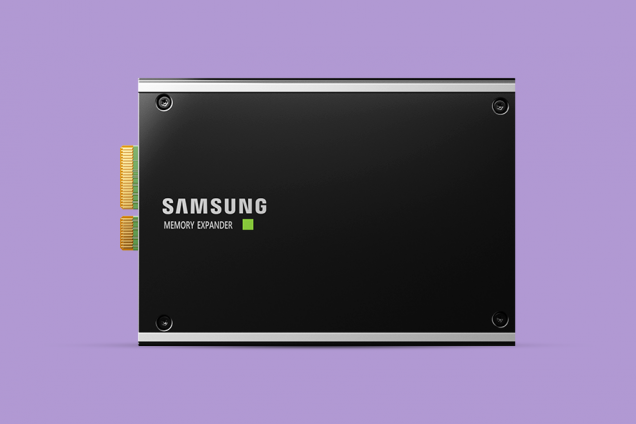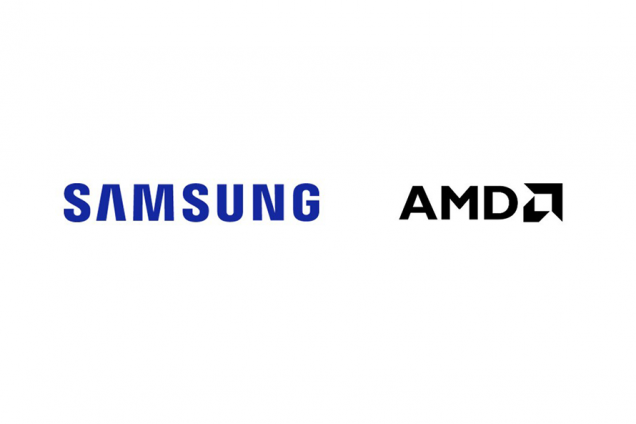Samsung Electronics Announces First Quarter 2023 Results
SEOUL, Korea – April 27, 2023 – Samsung Electronics today reported financial results for the first quarter ended March 31, 2023.
The Company posted KRW 63.75 trillion in consolidated revenue, a 10% decline from the previous quarter, as overall consumer spending slowed amid the uncertain global macroeconomic environment. Operating profit was KRW 0.64 trillion as the DS (Device Solutions) Division faced decreased demand, while profit in the DX (Device eXperience) Division increased.
The DS Division’s profit declined from the previous quarter due to weak demand in the Memory Business, a decline in utilization rates in the Foundry Business, and continued weak demand and inventory adjustments from customers.
Samsung Display Corporation (SDC) saw earnings in the mobile panel business decline quarter-on-quarter amid a market contraction, while the large panel business slightly narrowed its losses.
The DX Division’s results improved on the back of strong sales of the premium Galaxy S23 series as well as an enhanced sales mix focusing on premium TVs.
The strength in the Korean won against the US dollar, euro and most major emerging currencies resulted in a negative impact of approximately KRW 0.7 trillion on company-wide operating profit, mostly in the component business.
In the second quarter, while current market conditions are expected to remain, the DS Division will focus on boosting technological competitiveness, including the gate-all-around (GAA) based 2-nanometer (nm) process, while meeting demand for DDR5, LPDDR5x and other high-end products.
SDC’s mobile panel business will focus on meeting demand projections for the second half of the year, while the large panel business is expected to see an increase in quarterly sales.
The DX Division aims to maintain solid profitability by expanding sales of the Galaxy A series smartphones and new TV models while also improving cost efficiency.
In the second half of the year, based on expectations of a gradual market recovery and a rebound in global demand, the DS Division will focus on high-capacity server and mobile products. The DS Division will continue to strengthen its technology leadership by expanding customers for leading-edge products based on the GAA process.
SDC’s mobile panel business is expected to continue leading the high-end market, while its large panel business will further expand in the premium market and improve profitability.
The DX Division plans to solidify its leadership in the premium segment, including foldable smartphones and Neo QLED screens. The DX Division also aims to increase market share by expanding collaboration with partners and will enhance profitability by continuing to improve operational efficiency.
The Company’s total capital expenditures in the first quarter stood at KRW 10.7 trillion, including KRW 9.8 trillion for semiconductors and KRW 0.3 trillion for displays. Spending on memory was concentrated on completing the P3 infrastructure and on the P4 framework in preparation for mid- to long-term supply. Foundry investments focused on fabs in Taylor, Texas and Pyeongtaek, Korea to address demand for advanced nodes, while investments in displays focused on infrastructure and module production enhancements.
Semiconductor Demand Expected to Gradually Recover in 2H
The DS Division posted KRW 13.73 trillion in consolidated revenue and KRW 4.58 trillion in operating losses for the first quarter.
The Memory Business’s performance fell significantly compared to the previous quarter, with ongoing inventory adjustments leading to a decrease in overall demand amid an economic slowdown and weakened customer spending.
For DRAM, demand was sluggish due to inventory adjustments by server customers, mainly hyperscalers, and purchasing delays and Set-Build reductions, with consumer demand for mobile and PC applications having not yet recovered. The Memory Business focused on selling high value-added products such as high-density mobile products and meeting server-use DDR5 demand in line with the adoption of new CPUs. While prices fell less than the market forecast, bit growth could not meet the previous guidance.
As for NAND, despite weak demand, the Memory Business actively responded to trends shifting toward high-density across overall applications, such as eStorage of 512GB and above for major mobile customers and client SSDs of 1TB and above for PC OEMs. As a result, our bit growth exceeded the previous guidance.
Looking ahead to the second quarter, as major hyperscalers invest more conservatively in servers and customers continue to adjust their inventories, limited demand recovery is expected.
For DRAM, the Memory Business will respond to increasing demand for DDR5 and high-density modules led by the launch of new CPUs for servers and increased demand for AI and will also actively respond to LPDDR5x demand for mobile high-end products such as new form factor smartphones.
For NAND, based on cost competitiveness, the Memory Business plans to actively address demand for high-density products across all applications while responding to customer needs for high-density storage by creating mobile quad-level cells (QLC) markets and diversifying product portfolios.
In the second half, demand is expected to gradually recover as customer inventory levels will have declined due to inventory adjustments occurring since the second half of last year. Set-Build demand is expected to improve with the launch of new smartphones and PC promotion. In addition, the portion of DDR5 for servers is expected to increase due to the expansion of new CPU adoption, and content-per-box will continue to grow as the transition to high-core CPUs accelerates.
For DRAM, the Memory Business plans to accelerate the conversion of cutting-edge nodes for DDR5 and LPDDR5x and actively respond to the strong market demand for HBM3 8H and 12H.
For NAND, the Memory Business will strengthen supply operations for products that customers need by creating a mobile QLC market and expanding the supply of cutting-edge nodes such as V7 and V8.
The System LSI Business’s earnings fell sharply in the first quarter due to a drop in demand for major products such as SOCs, sensors and DDIs. Nevertheless, System LSI achieved sales growth for mobile SOCs and launched an ultra-wide band-based short-range wireless communication semiconductor.
In the second quarter, the System LSI Business expects overall demand to remain at a similar level, but there is some visibility regarding declines in customer inventories for products such as sensors and panel DDIs. Demand for inventory accumulation ahead of the third quarter peak seasonality should also contribute to a slight earnings recovery.
In the second half, the System LSI Business expects customer inventories to normalize for system IC components, and overall mobile demand is likely to recover, starting with a recovery in the Chinese market. System LSI will try to re-enter flagship segment to strengthen the business competitiveness of the mobile SoC business, and also expect to expand business areas as a customer is planning to commercialize fingerprint authentication-based credit cards with more enhanced security.
The Foundry Business saw demand contract in the first quarter. This resulted in high inventory levels and a subsequent decline in orders that led earnings to fall significantly.
The Foundry Business is mass producing the 1st generation 3nm process by applying GAA technology, with yields remaining stable into and throughout the quarter. It is also developing the second-generation process and is focused on securing new orders from key customers who need high-performance, low-power characteristics in mobile and HPC applications, aiming for mass production in 2024.
In the second quarter, the Foundry Business expects earnings to improve slightly quarter-on-quarter thanks to a rebound in demand. In addition, the basic infrastructure of 2nm designs has recently shown meaningful silicon results, and development progress is on track. The Foundry Business also secured the foundation to support future products for generative AI by completing the development of a high-density memory integration technology.
In the second half, the market is expected to recover around HPC/Auto and earnings are projected to rebound accordingly. Based on the stable development of second generation 3nm GAA, the Foundry Business will expand new customer orders and strengthen its technical leadership by smoothly advancing the development of 2nm, the next-generation technology.
Display to Solidify Leadership in Premium Market throughout 2023
SDC posted KRW 6.61 trillion in consolidated revenue and KRW 0.78 trillion in operating profit for the first quarter.
For mobile panels, although market demand continued to contract, SDC fortified its market leadership due to the expansion of foldable phone models, strong sales of flagship products, and dominance in the premium segment.
For the large panel business, SDC solidified its position in the premium market on the back of a full-fledged launch of new QD-OLED products by its major customer and a diversification of product sizes and other specifications.
In the second quarter, SDC expects to see results decline year-on-year due to the global economic slowdown increasing seasonal effects.
SDC plans to maintain its dominance in the high-end market and maximize sales by promoting the adoption of OLED panels throughout its main customer’s entire lineup and by accommodating their mass production of new products in the second half. For large panels, while demand is likely to remain weak, sales should grow as new products for 2023 roll out in earnest.
In the second half, while concerns over market uncertainties and the economic downturn remain, there are hopes for a potential demand recovery due to improving market conditions in China.
SDC aims to keep its leadership in high-end smartphones by leveraging its differentiated technology in new offerings and expanding sales by enhancing the performance of foldable products.
Demand for large panels is expected to be sluggish due to prolonged economic uncertainties. However, SDC will focus on strengthening its presence in the premium market by offering a wider range of sizes to more countries and diversifying its customer base.
Despite market conditions, SDC has decided to invest in an 8.6-generation OLED production line. Starting this year, SDC will strive to scale up the OLED market and increase adoption of OLED panels in the laptop, tablet, and automotive markets.
Mobile Posted Solid Earnings Led by Successful Launch of Galaxy S23
The MX and Networks businesses posted KRW 31.82 trillion in consolidated revenue and KRW 3.94 trillion in operating profit for the first quarter.
While demand across the overall smartphone market decreased, the premium market grew from the previous year in both volume and value. The MX Business recorded higher sales compared to the previous quarter and saw profitability recover to double digits. The positive first quarter performance was led by strong sales of the newly launched Galaxy S23 series, specifically its most premium model, the Galaxy S23 Ultra. In addition, efforts to enhance operational efficiency throughout the business contributed to a significant boost in operating profit.
The Networks Business posted a revenue decline, due to weakness from overseas markets such as North America and Southwest Asia.
In the second quarter, market demand is expected to recover in the low-to-mid segment, leading to a slight quarterly increase in market volume and a decline in value.
The MX Business will focus on supporting steady sales of the Galaxy S23 series while increasing marketing for its foldable phone category. This will boost sales of existing models and drive awareness for the upcoming launch of new models in the second half. The MX Business will also focus on addressing recovering mass-market demand via the new Galaxy A54 and Galaxy A34 series, which deliver a stronger premium experience through key product upgrades and a new design.
The Networks Business will seek new business opportunities while continuing to focus on the Korean and North American markets.
In the second half, the smartphone market is expected to increase in both volume and value amid signs of a global economic recovery. As a result, the MX Business expects especially strong demand in the premium segment.
The MX Business will unveil its new foldable phones with enhanced user experiences, further cementing Samsung’s leadership in the category. For the Galaxy S23 and Galaxy A series, MX will collaborate closely with partners and implement customer sales programs tailored by region. In addition, the MX Business will strengthen the competitiveness of its tablets and wearables and highlight the premium ecosystem experience amid an expected flat market that follows significant growth during the pandemic.
The Networks Business will seek revenue growth by winning new orders and expanding in overseas markets while also strengthening its leadership in 5G core chips and virtualized Radio Access Networks.
Visual Display and Digital Appliances to Continue Focus on Premium and Lifestyle Products
The Visual Display and Digital Appliances businesses recorded KRW 14.08 trillion in consolidated revenue and KRW 0.19 trillion in operating profit for the first quarter.
While demand for TVs declined due to the ongoing impact of the global economic downturn, the Visual Display Business posted higher results both quarter-on-quarter and year-on-year by focusing on sales of high-value-added products and reducing overall costs.
The Digital Appliances Business posted earnings similar to the previous quarter amid slower demand and ongoing burden of cost.
In the second quarter, market demand as a whole is expected to contract at a slower pace compared to last year.
Nevertheless, the Visual Display Business will focus on meeting demand for premium products including the 2023 Neo QLED and its offerings and also aim to secure profitability by optimizing operations and managing costs.
The Digital Appliances Business will focus on securing profitability by globally expanding the Bespoke lineup and improving cost efficiency.
In the second half, market demand is expected to gradually recover due to seasonal spending trends, though continued external uncertainties are likely to intensify competition within the industry.
The Visual Display Business will continue leading the industry by monitoring the rapidly changing market conditions and leveraging seasonal sales opportunities through differentiated promotion strategies, focusing on key products including Neo QLED, OLED, Lifestyle Screens, and expanding the 98″ Super large screen and Micro LED lineups.
The Digital Appliances Business plans to boost competitiveness through SmartThings and growth of increasing sales of premium products.
Related tag
Related Stories
-
 2023.05.12Samsung Develops Industry’s First CXL DRAM Supporting CXL 2.0
2023.05.12Samsung Develops Industry’s First CXL DRAM Supporting CXL 2.0 -
 2023.04.06Samsung Electronics and AMD Extend Strategic IP Licensing Agreement to Bring AMD Radeon™ Graphics to Future Mobile Platforms
2023.04.06Samsung Electronics and AMD Extend Strategic IP Licensing Agreement to Bring AMD Radeon™ Graphics to Future Mobile Platforms -
 2023.03.22Samsung Semiconductor Site Awarded Highest Level Global Certification for Water Resource Management
2023.03.22Samsung Semiconductor Site Awarded Highest Level Global Certification for Water Resource Management